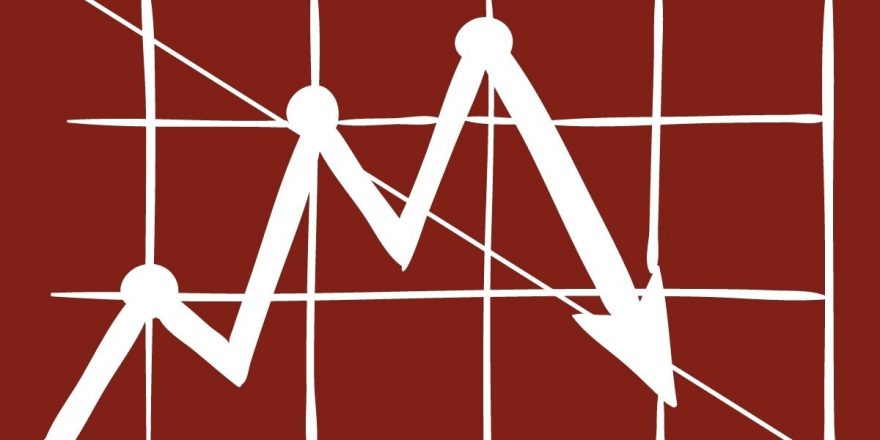Are Monetary Policy Impulses Fueling Cryptos Price Decline?
The ranging inflation figures witnessed in 2022 have plunged households across the globe to contend with rising food, rent, and energy prices. The stubborn inflation has compelled multiple central banks to embrace contractionary monetary policies. The macroeconomic tool has aimed at reducing the money supply – cash and readily cashable funds circulation in the nation.
Primarily, the majority of central banks, such as the Federal Reserve (Fed) and Bank of England (BoE), have raised interest rates to cool the demand fueling inflation by making borrowing expensive for borrowers. The hawkish policy imposed to curb inflation has influenced the pricing of risky assets.
Cryptocurrency assets are no exemptions from the reaction to the aggressive monetary policy, particularly after consistently remaining uncoupled from the leading risk and uncertainty indicators. The price movements in the global crypto market have displayed an observable reaction to each interest hike announced by the Fed and BoE to rein inflation.
Investors of high-risk assets consider higher interest rates to imply a lower appetite for high-return assets such as crypto assets. With the cryptocurrency market increasingly correlated to the stocks, the bearish steam portrayed by the crypto in 2022 is a consequence of the worsening macroeconomic outlook.
Impact of Interest Hikes on the Crypto Market
A review of the recent crypto market downtrend reveals the impact of the interest hikes. In particular, the Federal Reserve meeting on January 26 plunged Bitcoin’s (BTC) price by 6% from the $38,000 support level to $35,600 in a day. The adverse impact of the Fed’s tight monetary policy traces to the FOMC December 14-15 minutes released on January 5, 2022. The publication eroded BTC, the largest crypto asset per CoinMarketCap data, price by $3200 to exchange at $43200 in hours. The reaction to the interest rate increase sank BTC price by 10% to $41,500 a few days later.
Since the FOMC publication early this year, BTC has led other crypto assets on a longer-term bloodbath. The global cryptocurrency market cap is $797 Billion, a 75.36% loss in total value from one year ago, according to CoinGecko data captured in Figure 1 below.
The downward spiral displayed above is an accumulative effect of the Fed’s increasing hawkishness, delivering a depressive market sentiment to crypto investors. The hawkish stance demonstrated by Fed in 2022 is the driving factor of downswings witnessed in risky assets and turning 2022 into a bearish year of the global crypto market.
Fed’s decision to raise the federal benchmark rate by 25 basis points on March 16 2022, to a target range of 0.25%-0.50% wielded power over the crypto market, with its total value plummeting to $1.788 trillion. The market capitalization slipped to $1.286 trillion in the subsequent May 4 announcement to increase the target range to 0.75% and 1% and reduce its balance sheet through treasury and mortgage-backed securities disposal.
The elevated inflation led to a 75 basis points increase on June 15, raising the target range to 1.5% – 1.75%. The crypto market reacted to the higher Fed’s fund rate with a $411 billion decline to a total value of $875.772 billion.
The July 27 review through the Consumer Price Index illustrated that inflation rose to 9.1%. It compelled the Fed to announce a 0.75% increment to the target range of 1.5% and 1.75%. It coincided with the BoE’s 50 basis points increment of the interest rate- the highest in 27 years. The two largest single-rate increments brought widespread consequences that restricted the total crypto market value to $899.752 billion.
The crypto market gained bearish steam following the September 21 announcement when the Fed replicated the previous increment in July of 0.75%, pushing the target range to 2.25% – 2.5%. Similarly, BoE replicated the half-point increment in July, targeting a 2.25% benchmark rate to arrest the climbing inflationary pressure that has outpaced other major economies. It prompted the projection of looming recession threats with a sizable value of crypto assets eroded.
Looking Ahead
Surging inflation rates witnessed across major economies have defied the tight monetary policies. In particular, the BoE is concerned with the deteriorating economic outlook acknowledged by the Office for National Statistics (ONS) during the CPI reading indicating inflation burst to 10.1%. The re-emergence of double-figure inflation dashes hopes of a dovish monetary policy from the BoE.
Looking ahead, BoE’s governor, Andrew Bailey, admitted that a substantial interest rate hike is imminent, with inflation unlikely to fall amidst higher energy bills in winter. The Federal Reserve is under immense pressure from the September CPI reading released by the Bureau of Labor Statistics, indicating an 8.2% rise. The soaring inflation reported in the UK and US constitutes ground for consecutive tighter monetary policies that will have widespread consequences for high-risk investments. Higher benchmark interest rates in Fed and BoE rate-setting announcements will accelerate further crypto meltdown in the last quarter, making 2022 a bearish year.
Source: Read Full Article

